PinotFile: 11.43 May 1, 2019
|
An Historical Perspective of the Winery Mailing List
I found a number of historical inaccuracies in my research. An article published online, ‘Complete Napa Valley California Wine History from Early 1800s to Today’ at www.winecellarinsider.com, stated that “The first California wine to be sold vis mailing lists was Grace Family in 1978.” Lettie Teague, writing in www.foodandwine.com March 31 2015, said, “The mailing list phenomenon began some ten years ago with small-production wineries, mostly California, that are (mostly) selling cult Cabernets.” My research, aimed at setting the record straight, confirmed that Stony Hill Vineyard was the first California winery to offer a mailing list, dating to the early 1950s.
Stony Hill VineyardFred McCrea (1896-1977) and his wife Eleanor (1908-1991) were looking for land on which to build a summer house in 1943. They were living in the Bay Area Peninsula at the time and frequently drove to the Napa Valley to peruse the area. That yer they acquired a 160-acre homesteaded goat farm in the hills above the Napa Valley at the base of Spring Mountain northwest of St. Helena. After the war, in 1948, they began planting wine grapes, a few acres at a time, beginning with Chardonnay primarily due to their shared love of white Burgundy. The Chardonnay budwood was obtained from Wente’s vineyard. Chardonnay was rarely planted in California then, with only 225 acres in production. Riesling, Pinot Blanc and Semillon were included to diversify the vineyard, and later Gewürztraminer was added. A major replanting of the Stony Hill Vineyard was undertaken beginning in 1986. A winery was built in 1951 and bonded in 1952. The first commercial wines were released in 1952 under the Stony Hill Vineyard label, a name that was chose to reflect the rugged terrain of the property. The Chardonnays crafted by Fred were unique for the time because they were aged in French oak barrel, did not undergo malolactic fermentation, and were extremely age-worthy. Production in the early 1950s was between 100 and 200 cases of Chardonnay and about 150 cases of Riesling. The Stony Hill Chardonnay was first entered in the California State Fair in 1953 and won a gold medal at that competition in 1955 and 1960. The McCreas sold some of their grapes and did not use all of their grapes in wine production until 1962, when the couple moved from the Peninsula to live full-time at Stony Hill Vineyard. The first restaurant account for Stony Hill Vineyard was Trader Vic according to Eleanor. “Owner Victor Bergeron probably did more to put California wines on restaurant wine lists than any other person, because he believed in California wines long before most restaurants did. He sought them out, and he pushed them.” Another early restaurant account was the Imperial Dynasty in Hanford, California. Eleanor recalled, “They called us up and wanted to have our wine, and they bought it continuously thereafter. It’s a Chinese restaurant, but it has a French side to it also. I have never managed to get there, but it’s the kind of place where people go out of their way to go to, and Hanford is surely out of the way (she laughs).” I have been to the Imperial Dynasty many times over the years, and chef Richard Wing often featured Stony Hill wines in his prix fixe meals. Here is an example from April 12, 1987:
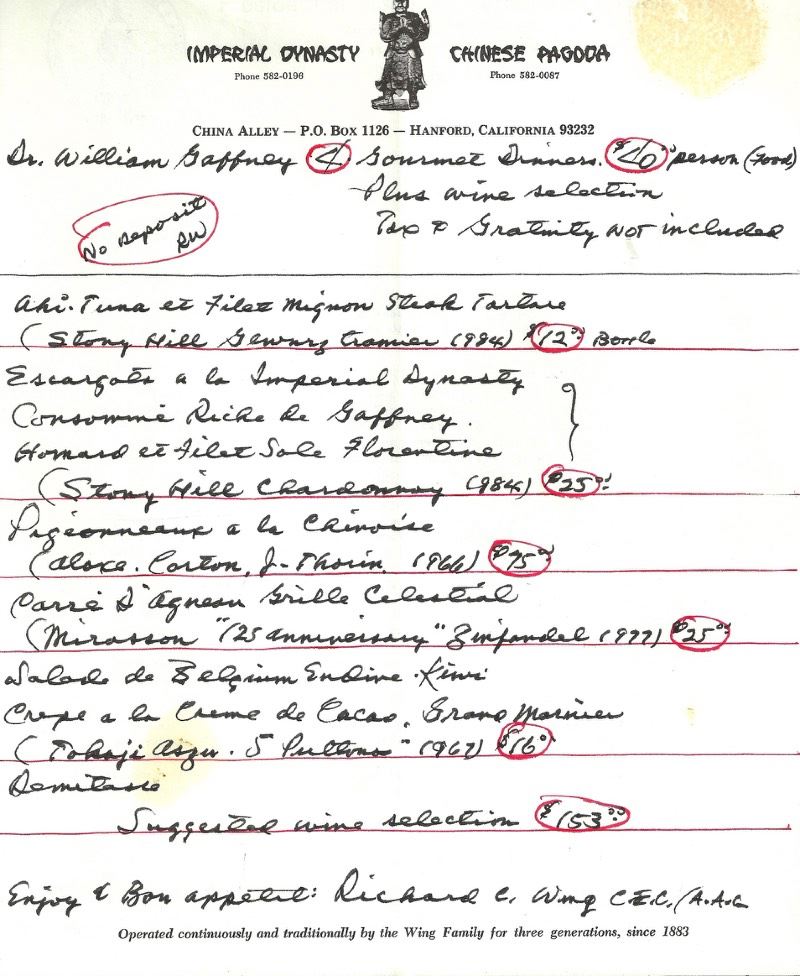 Stony Hill Vineyard wines attracted connoisseurs and the resulting demand led Stony Hill Chardonnay to become Napa’s first cult wine. A mailing list for direct-to-consumer sales was first started in the early 1950s. The list started modestly when the McCreas entertained San Francisco Bay Area friends and served them their wine. The friends wanted to buy the wines and they, in turn, told their friends. By 1954, every bottle was sold through the winery’s mailing list. Eleanor wrote the mailer including descriptions of the wines. A waiting list had to be added by about 1985 and by 1990 the wait to get on the mailing list was at least four years. The mailing list eventually spanned several generations of consumers, and the only people who were dropped from the list were those who failed to pay their bills, died or did not place an order for wine for two years. A little-known fact is that Pinot Noir was planted in 1972 at Stony Hill, the winery’s first experience with red wines. Only four rows of Pinot Noir were made into a barrel of Pinot Noir and a barrel of Pinot Noir Blanc, but was never sold commercially. The staff drank it. In September 2017, the McCrea heirs sold their winery to the Hall Family of Long Meadow Ranch. A proper epilogue for Stony Hill Vineyard was actually a preface written by Jack Davies, Managing Director of Schramsberg Vineyards, for a published interview of Eleanor McCrea conducted in 1990. “Stony Hill has done many things for all of us. Eleanor and Fred proved that lovely Chardonnay could be made in Napa. They helped prove that consumers would pay a fair price for a fine, personally-made wine. They proved that one didn’t need every bell and whistle in the world to accomplish things. They proved that one could maintain personal integrity, enjoy life, and keep the checkbook balanced all at once. They proved that innovation and experimentation are open for everyone.” I would add that they were also responsible for creating the winery mailing list that is now the model used by almost every California winery.
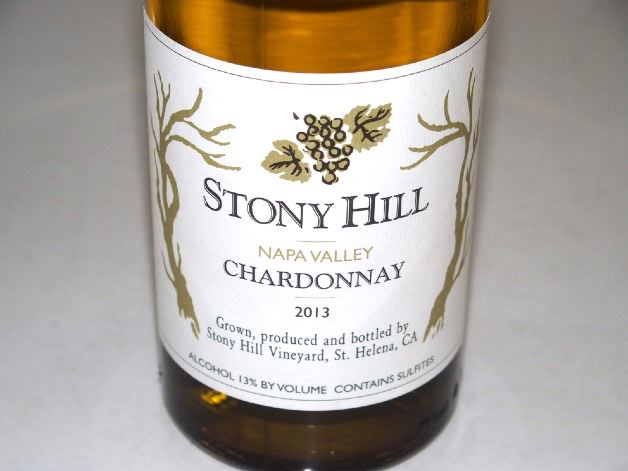 Main references: Stony Hill Vineyards: the creation of a Napa Valley estate winery, an interview of Eleanor McCrea conducted by Lisa Jacobson in 1990 as part of The Wine Spectator California Winemen Oral History Series. A Companion to California Wine: An Encyclopedia of Wine and Winemaking from the Mission Period to the Present, Charles L.Sullivan, 1998.
Williams Selyem: Not the First Mailing List But Still UniqueWhen I first signed up for the Williams Selyem mailing list in the very early 1990s, I received a personal letter from Ed Selyem. He described two releases per year, spring and fall, with three to four choices per release. The wine was sold in 30-day lots. At that time, there was usually no minimum purchases but there were maximums. 85% of production was sold directly to individuals through the mailing list and 15% to retailers and restaurants that helped the winery succeed. Ed tried hard to devise an equitable distribution system and categorized everyone into 27 groups with allocations based on how long you were on the list and your past purchasing history. Some wines were produced in quantities that were less than the number of mailing list customers and were not offered to everyone. A standing personal order could be submitted to avoid the disappointment of missing the small window of time that the wines sold out each spring and fall. The wine offering mailings were accompanied by both Burt’s tasting descriptions of each wine and Ed’s “feelings” about the wines, recaps of older wines including aging potentials and tasting notes (“every vintage and bottling must be accurately described and apt enough for folks to distinguish and reconcile same with their personal palates and inventories”), a list of restaurants where Williams Selyem wines were served in California, a partial list of restaurants Williams Selyem wines were served in other states and international, a list of awards, press and notoriety given each release, and a local lodging list and current favorite local eating places. By spring 1994, Williams Selyem released 2910 cases to 2372 customers along with sincere apologies to those who did not receive all the wine that they would enjoy. “Frankly, increased production with constant or increased quality has vineyard and personnel limitations.” Production was predicted to increase to 5,000 cases for the 1993 vintage. The mailing list conveyed a very personal connection between Burt and Ed and their customers. The mailer would begin, “Hello friends, friends in wine, valued customers and new folks.” The mailers were filled with colorful information beyond wine descriptions. For example, “Can’t consume a bottle of our wine in one day? Cork it up and taste it the next day. Still good but different and even better almost always.” And, “Among the great correspondence we receive from you was one asking us to hurry our next release because they had missed the last one and their friends have stopped coming over.” Even a hand-drawn map to the winery was included with one early mailer:
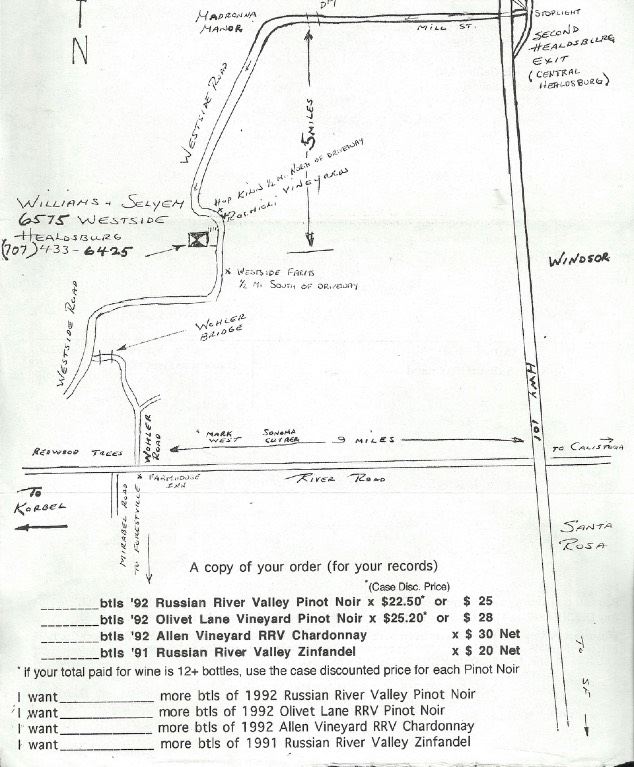 There is a funny story, first reported in The New York Times by Frank J. Prial in March 1997, regarding the Williams Selyem mailing list. Ed Bradley, a correspondent for CBS’s “60 Minutes” and a wine enthusiast, was determined to get his name on the William Selyem mailing list. Bradley told Burt that if he didn’t put him on the list, he would get Andy Rooney to do a commentary on people who keep lists. Burt said, “Well, we couldn’t have that. So we put him on.”
A Trio Of Pinot Noir Maestros
Talisman, Sonoma, CAThe 2015 vintage provided very small yields and resulting very concentrated wines. The Pinot Noirs were shy and tight early on and are just beginning to slowly open. The wines, scheduled for release June 1, 2019, have been held back until ready. Decant or allow plenty of air time to thoroughly enjoy the wines. Talisman Pinot Noir wines are consistently age-worthy. Proprietors Scott and Marta Rich invite you to their tasting room in Glen Ellen, open Thursday-Monday or by appointment. Visit the winery’s website at www.talismanwine.com for a more complete rundown on the winery.
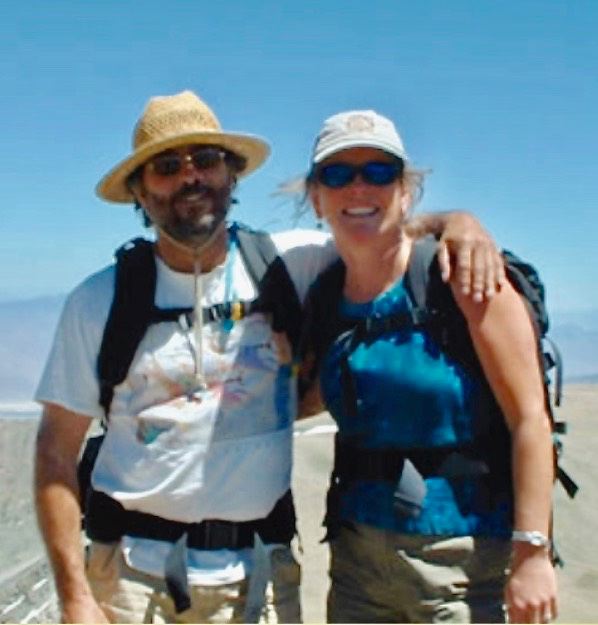
2015 Talisman Sadie’s Vineyard Russian River Valley Pinot Noir 14.4% alc., pH 3.68, TA 0.55, 223 cases, $48. Sourced from a 5-acre vineyard located in the Sebastopol hills along the Bodega Highway corridor. Goldridge soils. Pommard and Dijon 115. Ambient fermentation with 25% whole cluster. At the completion of fermentation after a week, the tank was sealed for extended maceration. After about 40 days after picking, the grapes were pressed and the wine barreled using five favorite coopers. The wine remained unracked for 19 months in French oak barrels, 50% new. · Moderately dark garnet color in the glass. Shy, but pleasing aromas of black cherry and toasty coconut. Very polished in the mouth, with a mid weight plus charge of purple and black fruits along with an appealing mushroom earthiness. A bit rugged and daunting at this stage with husky, chewy tannins and a prominent oak frame. When tasted the following day from a previously opened and re-corked bottle, the wine was unchanged. This wine will need a few years in the cellar to reach its full appeal. Score: 91-92
2015 Talisman Wildcat Mountain Vineyard Sonoma Coast Pinot Noir 14.2% alc., pH 3.59, TA 0.56, 174 cases, $60. This vineyard is situated high (750 feet) on the southern flank of the mountain range defining the western edge of Sonoma Valley. Soils are well-drained volcanic and rocky. The vineyard was established in 1998 by Nancy and Tom Lilly with their partner, noted vintner Steve MacRostie. Clones are Pommard and Dijon 115 and 777. Yield 2.6 tons per acre. Ambient fermentation with 25% whole cluster. Fermentation went to completion in a week and then the fermenter was sealed for extended maceration. After 40 days, the fermenter tank was drained, the remaining grapes pressed, and the wine was sent to oak barrels from five coopers. The wine was aged 21 months unracked in 57% new French oak. · Moderate garnet color in the glass. Inviting aromas of purple berry, underbrush and toasty oak. The earth-kissed core of boysenberry, blackberry and purple grape fruits have excellent juiciness and vigor. The tannins are well matched, there is righteous acidity and a modest but pleasant finish. Score: 93
2015 Talisman Huckleberry’s Vineyard Green Valley of Russian River Valley Pinot Noir 14.5% alc., pH 3.73, TA 0.68, 74 cases, $65. Close-spaced vineyard is planted in Goldridge soils and managed entirely by hand by Bill and Lauren Hipp. Dijon 115, 667, 777 and “828.” Yield 2.2 tons per acre. Ambient fermentation with 25% whole cluster lasted one week. The tank was then sealed and extended maceration performed. After about 40 days, the fermenter was drained, the remaining grapes pressed, and the wine was barreled using oak from five coopers. The wine remained unracked for 21 months of aging in 50% new French oak. · Moderately dark garnet color in the glass. Brooding aromas of purple berries lead to a big boy wine with a charge of purple and black fruits that floods the mouth with goodness and generosity. Beautifully crafted and very charming, with impeccable balance, deftly managed oak, and a lengthy finish. More appealing when tasted the following day from a previously opened and re-corked bottle when the aromatics really came alive. Score: 94
2015 Talisman Starscape Vineyard Russian River Valley Pinot Noir 14.5% alc., pH 3.63, TA 0.56, 267 cases, $56. This vineyard source was previously named Floodgate and prior to that, Mark West Vineyard. It is located at the southern end of the Middle Readh. Pommard, Dijon 777 and “828.” Yield 2.8 tons per acre. Ambient fermentation with 25% whole cluster. Aged 19 months in French oak barrels, 55% new. The wine was bottled unfiined and unfiltered. · Moderately dark garnet color in the glass. The nose leads with aromas of black cherry, blackberry and spice. Well-ripened boysenberry and plum flavors in a mid weight plus style accented with redeeming spice. Richly endowed, yet very charming with an appealing elegance. The haunting finish exhibits some drying tannins, but is extremely persistent. Score: 93
2015 Talisman Adastra Vineyard Los Carneros Napa Valley Pinot Noir 14.3% alc., 224 cases, pH 3.74, TA 0.55, $59. Certified organic vineyard planted in 1994 in relatively light clay-loam soils. The site is naturally low in vigor with low yields. Clones 2A, Swan, Pommard, two suitcase selections and Dijon 113, 115 and 777. Yield 1.1 tons per acre. Feral fermentations with 25% whole cluster. Extended maceration prior to pressing and barreling. Aged 18 months in French oak cooperage, 56% new. · Moderate garnet color in the glass. Aromas of mushroom earthiness and blackberry jam. Mid weight flavors of blackberry, cassis, black tea and a hint of oak. Admirable balance, with modest tannins and a long, lip-smacking finish. Score: 93
2015 Talisman Gunsalus Vineyard Russian River Valley Pinot Noir 14.5% alc., pH 3.63, TA 0.56, 196 cases, $58. The first harvest of this vintage (August 27). Dijon clones 114, 115, 667 and 777. Yield 2.1 tons per acre. Ambient fermentation using 30% whole cluster. After a cold soak, fermentation lasted 14 days after which the fermenter was sealed for an extended maceration. 38 days after picking, the tank was drained, the remaining grapes pressed, and the wine sent to barrel from five coopers. The wine remained unracked for 19 months aging in 50% new French oak. · Moderate garnet color in the glass. This is a typical red-fruited bottling from this vineyard. Aromas of well-spiced, dark red cherry lead to a mid weight cherry bombast essence accented with flavors of cola, spice and mocha. Forward-drinking, with a slick texture, merged tannins, and a long, cherry-fueled finish. Score: 93
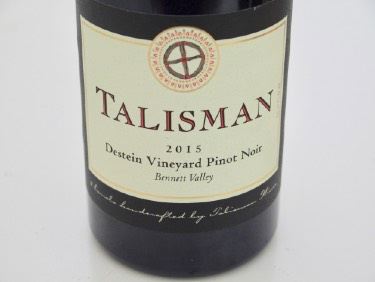 2015 Talisman Destein Estate Bennett Valley Pinot Noir 14.4% alc., pH 3.64, TA 0.58, 50 cases, $N/A. Vineyard is located in Jamison Valley at the east end of the Bennett Valley AVA. It is subject the cool air flowing through the Petaluma Gap. Soils are scanty, non-vigorous. Dijon 777 clone. Yields 2.0 tons per acre. Ambient fermentation with 25% whole cluster. After a week-long fermentation, the fermenter was sealed for extended maceration. About 40 days after picking, the must was pressed and the wine barreled to five different coopers. The wine remained unracked for 21 months in 50% new French oak. · Moderate garnet color in the glass. Very pleasant aromas of dark cherry and baking spices draw you into the glass. Instantly gratifying, with a mid weight core of delicious black cherry and black raspberry fruit flavors that are expansive in the mouth. Terrific harmony, with a silky, refined mouthfeel and a very long finish that exhibits a peacock tail of black cherry goodness. Flat-out terrific. Score: 94
Paul Lato Wines, Santa Maria, CAPaul started sixteen years ago with six barrels of wine. Today, his wines are featured on some of the wine lists of fine restaurants in Lyon and Paris. A quest for America’s great Pinot Noir led him to Santa Barbara County in 2002. Since his first fine Burgundy that he experienced as a 21-year-old while studying to be a sommelier, he has been in love with the Pinot Noir grape. The wine was a 1990 Comte de Vogue Les Amoureuses. But it was the Burgundies of Henri Jayer that he experienced years later that really blew his mind. Paul learned early one that it is impossible to recreate French Burgundy in California and it was a mistake to make wines that tasted similar to those of Burgundy. He found that California Pinot Noir might be less complex at times than their French counterparts, but they provided more consistency and value.
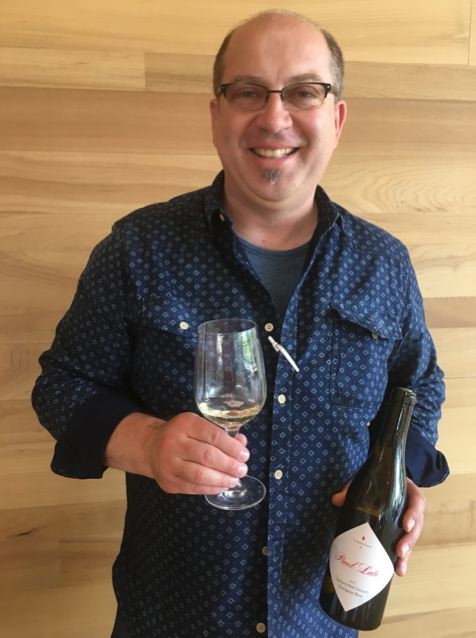 Paul now offers a multitude of single-vineyard Pinot Noir and Chardonnay wines. The wines are sold exclusively through a mailing list (2-3 offerings per year on a first-come, first-served basis) at www.paulaltowines.com. To be perfectly honest, I did not think this sampling of 2017 Pinot Noir from Paul was his best, simply because my expectations are high for his wines, but I was not notably disappointed. The wines reviewed here are some of the 2019 Pinot Noir releases from the 2017 vintage. All wines are unfiltered.
2017 Paul Lato “Duende” Gold Coast Vineyard Santa Maria Valley Pinot Noir 13.9% alc., $70. · Moderately light garnet color in the mouth. Nicely perfumed with aromas of cherry, raspberry, strawberry, earth and a hint of burnt tobacco. A red-fruited wine with excellent acid vibe, silky tannins and a deft touch of toasty oak. The most elegant of the 2017 vintage wines tasted, offering a lip-smacking finish with some length. Score: 91
2017 Paul Lato “Suerte” Solomon Hills Vineyard Santa Maria Valley Pinot Noir 14.1% alc., $80. · Moderate garnet color in the glass. Brooding aromas of black fruits and sous-bois. Mid weight plus flavors of plum, black raspberry, blackberry and a hint of tobacco oak are framed with gracious tannins. Fruit-laden, yet refined, showing an appealing seamlessness, and a generous and long finish. This wine needs a little more time to fully integrate the oak. Score: 92
2017 Paul Lato “Atticus” John Sebastiano Vineyard Sta. Rita Hills Pinot Noir 14.3% alc., $80. · Moderately dark garnet color in the glass. A complex nose of boysenberry, black raspberry, spice and clay loam is inviting. Discreetly concentrated flavors of boysenberry, blackberry and cassis in a well-ripened, mid weight style. Very earthy in tone, with a touch of nutty oak, gracious tannins and a moderately extended finish. Score: 93
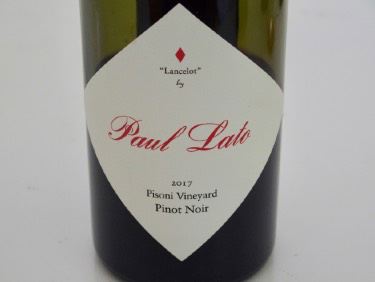 2017 Paul Lato “Lancelot” Pisoni Vineyard Santa Lucia Highlands Pinot Noir 14.8% alc., $90. · Moderately dark garnet color in the glass. Aromas of blackberry jam, mushroom and comfy oak. Very charming in a mid weight plus style, with waves of black cherry, pomegranate, botanical and spice flavors that trigger all the pleasure centers in the mind. Sleek, with integrated alcohol, adroit oak impression, and a long, purple berry-infused finish. Considerably more appealing when tasted the following day from a previously opened and re-corked bottle. Pisoni always seems to be a step above. Score: 95
Rivers-Marie, Calistoga, CAThere has been considerable press about the fires that hit Napa Valley and Sonoma County in October of 2017. Fortunately, the Sonoma Coast Pinot Noir wines were not affected. The growing season had been uneventful except for a Labor Day heatwave that had more of an impact on Napa than Sonoma. Peak temperatures were shorter and lower in Sonoma County. After Labor Day, the vines recovered quickly and there was a return to a cool growing season. Thomas Rivers Brown, the “celebrity” winemaker who was featured on the cover of a recent Wine Spectator issue, has a keen love for Pinot Noir. Even though most of his clients are Napa Cabernet Sauvignon producers, he has been crafting excellent Pinot Noir for years under the cultish Rivers-Marie label. He has great respect for winemaker Burt Williams.
 Regarding the 2017 Pinot Noir wines, Thomas said the following in his winter 2019 mailer. “The Pinot Noirs are characterized by great focus and purity, varietal and site transparency and racy acidities, basically everything that makes this grape so appealing. The perfume of these wines was apparent very early in their development. Several of the bottlings made dazzling first impressions as early as the fermenter stage. I was impressed by the lower sugars and pHs at true ripeness in 2017. This vintage was the most classic we have bottled to date.” Most of the wines need a few years to reach full potential. Rivers-Marie Pinot Noirs are released once yearly by allocation (everyone on the list receives the same allocation). Visit www.riversmarie.com. A Sonoma Coast and Anderson Valley Pinot Noir were also offered in 2017.
2017 Rivers-Marie Bearwallow Vineyard Anderson Valley Pinot Noir 13.9% alc., 260 cases, $60. · Moderately dark garnet color in the glass. Black cherry aromas dominate the inviting nose with added scents of orange peel and vanilla. Impeccably balanced with good vigor, offering mid weight flavors of black cherry, dark chocolate and nutty oak. Some, but not imposing tannins, and a lasting finish. Close to 94. Score: 93
2017 Rivers-Marie Occidental Ridge Vineyard Sonoma Coast Pinot Noir 13.8% alc., 240 cases, $60. Some whole cluster inclusion. · Moderately dark garnet color in the glass. Very engaging aromas of blackest cherry, cola and dark rose petal. A sleek array of dark red and black stone and berry fruits offer considerable pleasure and excellent energy. Mid weight in extraction, with tender tannins, a hint of nutty oak and a seductively silky mouthfeel. When tasted the following day from a previously opened and re-corked bottle, the composure was exquisite and the finish gained even more length. Score: 94
2017 Rivers-Marie Platt Vineyard Sonoma Coast Pinot Noir 13.1% alc., $60. Inaugural vintage from this vineyard. Calera selection. · Dark garnet color in the glass. Appealing aromas of black cherry, fertile soil and rose petal. Juicy and quenching, with a discretely concentrated core of black raspberry and pomegranate fruit. Suave in the mouth, with plenty of acidic verve, finishing long with intense dark raspberry fruit delight. Even more appealing the following day from a previously opened and re-corked bottle sporting evocative fruit and a gorgeous, lively, and even more flamboyant finish. Score: 94
2017 Rivers-Marie Silver Eagle Vineyard Sonoma Coast Pinot Noir 14.4% alc., 300 cases, $60. 15% whole cluster. Addition of Swan selection in this year’s bottling and deletion of clone “828.” · Dark garnet color in the glass. The nose is filled with the scents of black grapes, black plum and blackberries. The biggest and ripest fruited wine in the lineup, with a charge of dark berry fruits and a hint of raisin, underlain with a thread of oak. Silken in texture, with integrated tannins and an oak-infused, but satisfying finish. Only California could produce a flood of Pinot fruit like this. A little too ponderous and ripe for my personal taste. Score: 92
2017 Rivers-Marie Summa Vineyard Sonoma Coast Pinot Noir 13.5% alc., 300 cases, $60. A Rivers-Marie estate vineyard. · Dark garnet color in the glass. Mildly reserved aromas of sous-bois, black raspberry and blueberry fruits. Lighter in weight than the Old Vine Summa bottling, but with a vivacious and engaging core of dark red fruits and spice. Seamless, with lithe tannins, welcome acidity, and a caressing texture. The wine gains appeal over time in the glass. An excellent, giving wine now that has the balance to age nicely, but lacks the concentration and finish of the Old Vine Summa bottling. Score: 93
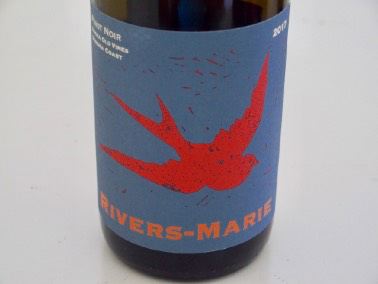 2017 Rivers-Marie Summa Old Vines Sonoma Coast Pinot Noir 13.1% alc., 180 cases, $80. Moving into the 40th year of these vines. · Dark garnet color in the glass. Provocative aromas of purple grape, boysenberry and plum. Amazing fruit concentration in a full-bodied style offering an array of black fruit and intriguing spice flavors that fan out on the palate with vigor. Similar to a Pinot Noir grape reduction sauce, but infused with good natural acidity and not compotey. Great harmony with a balancing grip of tannin, and a very long and extremely intense finish. The wine gains respect when tasted the following day from a previously opened and re-corked bottle. An old vine treasure that has a special aura that defies proper description. Score: 96
Moshin Vineyards & Winery
There are four estate vineyards: Moshin Estate Vineyard (original 10-acre vineyard planted in the early 1980s to Dijon clones, acquired in 1989, and replanted in 2007-2009 to Martini, Swan, Mt. Eden and Wädenswil 2A clones), Calliope Vineyard (2.5 acres of Pommard 5, Wädenswil 2A, and Calera clones planted in Goldridge soil in 2005), Rosalina Vineyard (4.5 acres of Calera, Wädenswil 2A and Pommard 5 planted in Goldridge soil in 2007) and River Myst Haven Vineyard (2.5 acres of Martini and Swan clones planted in Goldridge soil in 2009). Each vineyard is set either near or adjacent to the Russian River and receives the benefits of its maritime influence that include ample morning fog and daily temperature swings of 35 degrees.
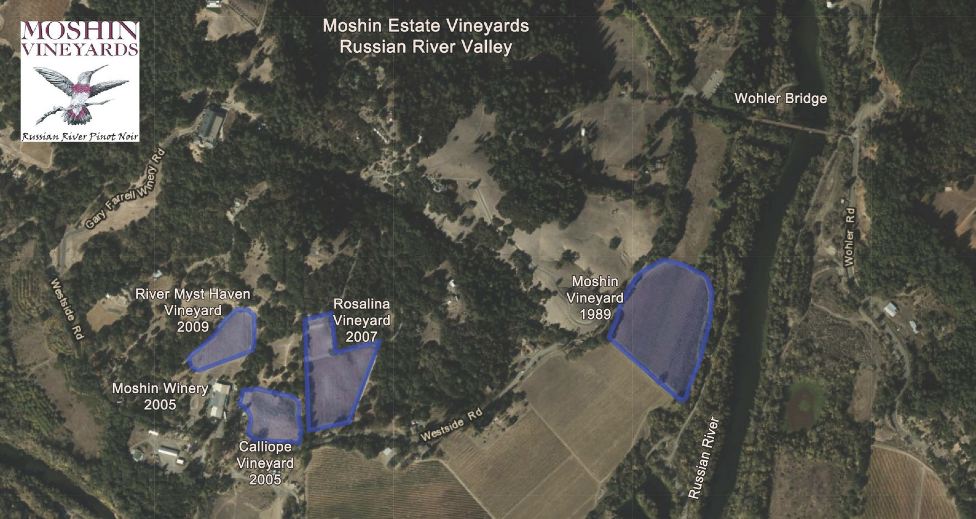 The winery was 20 years in the planning and is a four-tier, solar-powered, gravity-flow production facility built on five acres. The careful movement of Pinot Noir from crush pad to press to barrel to bottling room is possible without the use of pumps. In addition to Moshin, several prominent Russian River Valley Pinot Noir producers utilize the winemaking facility. The tasting room at the winery is open daily and private seated tastings and winery tours are also available by appointment. Visit www.moshinvineyards.com. This was my first opportunity to sample recent Moshin Pinot Noir and Chardonnay wines and I came away impressed. All the reviewed Moshin Pinot Noirs and Rosé were sourced from estate vineyards in the Middle Reach of the Russian River Valley. Two wines from the winery’s sister brand, Westside Crossing, offer excellent value.
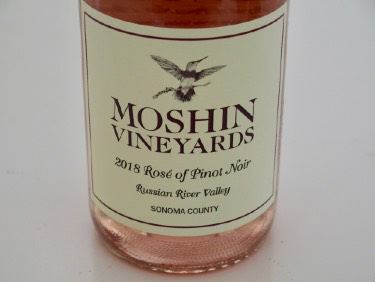 2018 Moshin Vineyards Rosé of Pinot Noir 13.2% alc., pH 3.31, TA 0.70, RS 0.1%, 1,705 cases, $25. A saignée. Harvest Brix 23.2º. · Light pink color in the glass. Nicely scented with aromas of strawberry, blood orange and rose petal. Bright, crisp and tasty, with refreshing flavors of red cherry, strawberry, watermelon and a hint of orange, finishing upbeat and quenching. Score: 91
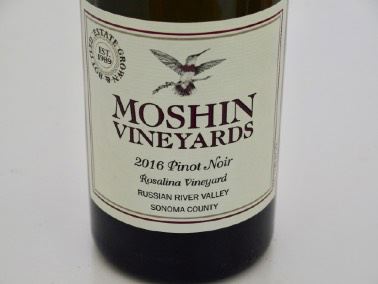 2016 Moshin Vineyards Rosalina Vineyard Russian River Valley Pinot Noir 13.8% alc., pH 3.70, TA 0.55, RS 0.1%, 200 cases, $58. Estate grown and bottled. Grapes are from a 5.5-acre estate vineyard planted in 2007 in Goldridge soil. Calera, Pommard, and Wädenswil 2A. Harvest Brix 24.0º. Aged 11 months in French oak barrels, 37% new. · Moderately light garnet color in the glass. Provocative aromas of Bing cherry, baking spices and bark. Quintessential Russian River Valley flavor profile of black cherry, cola, spice and a touch of toasty oak. Easily approachable, with a soft, dreamy texture and gracious tannins. Plenty of charm, with juicy cherry fruit fanning out on the lip-smacking finish. Score: 94
2016 Moshin Vineyards River Myst Haven Russian River Valley Pinot Noir 14.0% alc., pH 3.66, TA 0.62, RS 0.2%, 200 cases, $58. Estate grown and bottled. Grapes are from a 2-acre parcel planted in 2010 just above the winery.Swan and Martini clones. Harvest Brix 24.2º. Aged 11 months in French oak barrels, 35% new. · Moderately light garnet color in the glass. Aromas of black cherry, fertile earth and savory herbs. Good energy and balance in a middleweight style, featuring flavors of cherry, raspberry, boysenberry, white pepper and savory herbs. A healthy tannic backbone is supportive. Barrel treatment is well managed and the wine finishes with some persistence. Score: 92
2015 Moshin Vineyards Estate Russian River Valley Pinot Noir 14.1% alc., 375 cases, $42. · Moderate garnet color in the glass. Aromas of black fruits and muddy earth lead to a mid weight styled wine featuring flavors of blackest cherry, black currant and blackberry. Nicely composed, with a silken mouthfeel, agreeable tannins, and a delectable, black cherry-infused finish that is very long and intense. Score: 93
2015 Westside Crossing Russian River Valley Pinot Noir 13.9% alc., $28. Sourced from neighborhood vineyards that thrive near the historic crossing along the Russian River. · Moderately light garnet color in the glass. The nose offers expressive scents of cherry, spice, sandalwood and mocha. Light to moderate in weight, featuring cherry and raspberry fruit flavors accented with hints of piney oak and spice. A comforting and friendly wine with a pleasing grip of cherry on the finish. Score: 89
2016 Westside Cross Russian River Valley Chardonnay 14.1% alc., $20. Sourced from neighborhood vineyards near the crossing along the Russian River. · Moderate golden yellow color in the glass. Aromas of lemon oil, biscuit, petrichor and spice. Pleasing flavors of lemon, pineapple and vanilla creme. Nicely balanced with no oak intrusion and a lemon-lime finish. Score: 88
Pinot BriefsBeck Family Estates Launches Abbott Claim in Willamette Valley This new Pinot Noir and Chardonnay project is located in the Yamhill-Carlton AVA and comprises 60 acres of vineyards and a winery co-designed by Antony Beck and winemaker Alban Debeaulieu, formerly of 00 Wines. The winery will be completed in May 2020 and the first wines released in early 2020. Abbott Claim honors the first homesteader of the site, John F. Abbott, who moved to Oregon from New York in 1855. Some of the land was previously owned by Ken Wright. The vineyard is expected to obtain full organic certification within three years. Winemaker Debeaulieu previously worked at Domaine Drouhin Oregon, White Rose Estate, Chapter 24 and 00 Wines. In 2017, Beck gave Debeaulieu the winemaker position at his winery Angela Estate as well as the lead on the Abbott Claim project. Chardonnay Renaissance Continues in Oregon Many winemakers are touting Oregon Chardonnay, including Doug Tunnell of Brick House Vineyards. He says, “We can produce wines that have richness and texture but retain natural acidity, much like the Chardonnays of Burgundy.” Wynne Peterson- Nedry, winemaker at RR and Ridgecrest Wines, touts Chardonnay as well, “We make amazing, fresh, bright Chardonnays and they keep getting better. There are, of course, pioneers who have been making it for years, but without people focusing on it as their primary wine of choice it hadn’t gotten as much traction in the consumer and media world until recently.” One of the most sought-after auction lots at this year’s Willamette Pinot Noir Auction was a Chardonnay collaboration between Gran Moraine Winery and Eyrie Vineyards. The bad news is that Oregon’s Pinot Gris is fast becoming comparatively uninteresting to the consumer and some winegrowers are grafting over Pinot Gris to Chardonnay. What is Your Preference? Double or Triple Digit Pinot Noir? Exclusive bottlings of Willamette Valley Pinot Noir have now be offered frequently at $100 and more. Wineries such as Big Table Farm, Rose and Arrow, Domaine Serene, Antica Terra, White Rose Estate, and 00 Wines are raising the bar on pricing. Even $80 and $90 price tags are commonplace. The consumers interested in these wines are far and few between and I do not look to review them. Writer Ashlee Humphreys recently noted, “Consumers pay high, even extraordinary prices for high-status wines despite the availability of thousands of excellent, lower-priced alternatives.” Will success spoil Oregon wine? Proposal to Lower DUI Alcohol Limit in New York In New York State, the current legal limit is .08, but a bill now in the New York State Assembly would lower the legal limit to .05. If the proposal passes, New York would join Utah as the only other state to have a .05 BAC, the lowest in the nation. Hirsch Vineyards Now on Instagram Hirsch Vineyards and Winery on the True Sonoma Coast was founded in 1980 and is family-owned and biodynamically farmed. A Tasting Room is now open in Healdsburg. Beautiful landscape photos capture the essence if West Sonoma Coast. Visit www.instagram.com/hirschvineyards/.
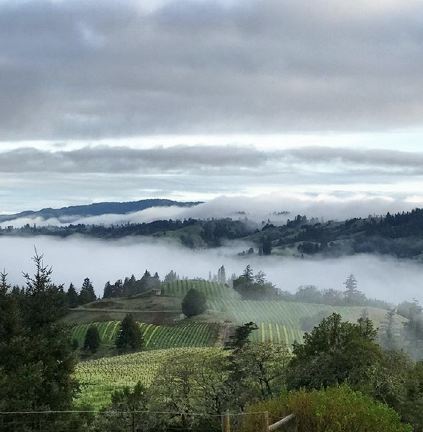 Second Largest Final Grape Crush Report for 2018 The California Department of Food and Agriculture’s (CDFA) Final Grape Crush Report for 2018 showed the largest total tonnage since 2013. The 2018 crush totaled more than 4.5 million tons, an increase of over six percent from 2017.
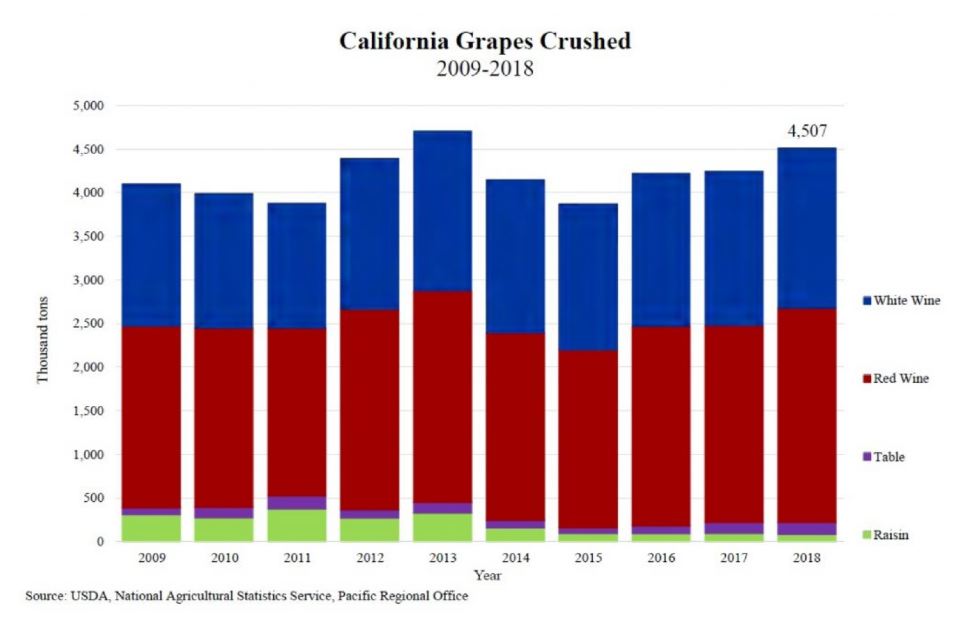 Chardonnay was the largest percentage of the overall tonnage volume, accounting for nearly 16 percent of the total.
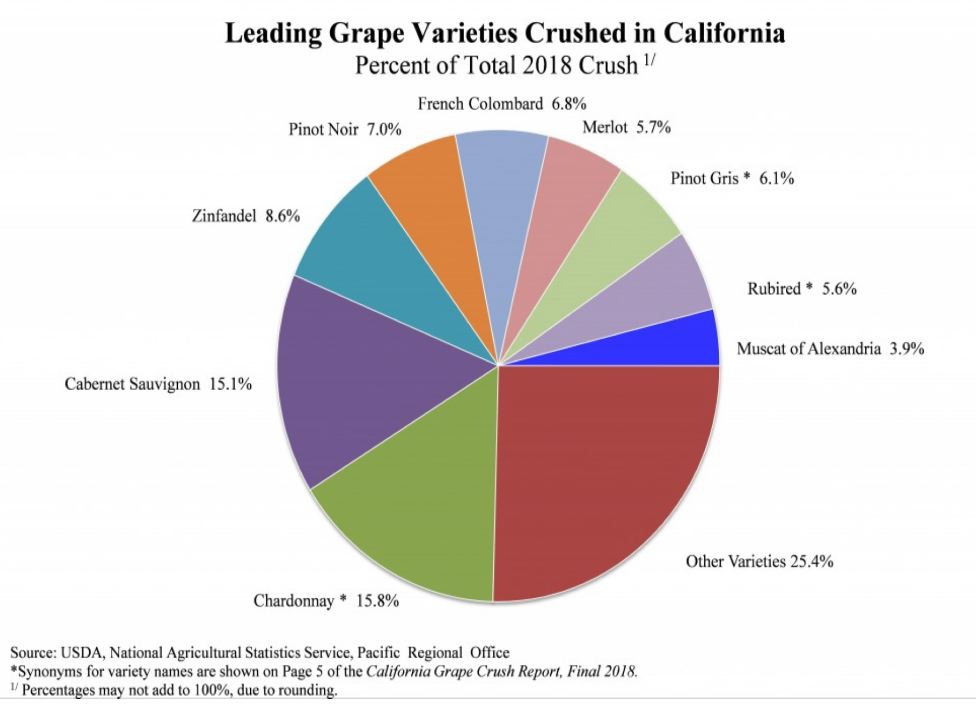 In the North Coast of California, farmworkers picked an all-time high 588,864 tons of grapes, a 26% increase from 2017, from vineyards in Sonoma, Napa, Mendocino and Lake counties during harvest. The average price of grapes set a record of $3,427 per ton, a 0.4% increase from the previous year. The most expensive grape variety in Sonoma County - Pinot Noir - had a yield of 58,005 tons, which was up 34% from 2017. The price for Pinot Noir decreased 2% from 2017 to $3,795 per ton. California Winegrape Acreage up 6.3% in 2018 Cabernet Sauvignon and Chardonnay are #1, with Pinot Gris and Sauvignon Blanc #2 and 3 among white varietals, and Pinot Noir and Petite Sirah #2 and 3 among red varietals. Pinot Noir planting in California in 2018 was 44,175 bearing acres. Amy Pohler’s ‘Wine Country’ Movie Jason Schwartzman, Rachel Dratch, Tina Fey, Ana Gasteyer, Emily Spivey, Paula Pell, Maya Rudolph and Amy Poehler star in a movie that takes place with the backdrop of Napa and Sonoma County. This dark comedy premiers May 8 in select theaters and May 10 on Netflix. Director Amy Poehler had this idea after a trip three years ago to Napa Valley and Sonoma County where the group did “a bunch of girly stuff.”
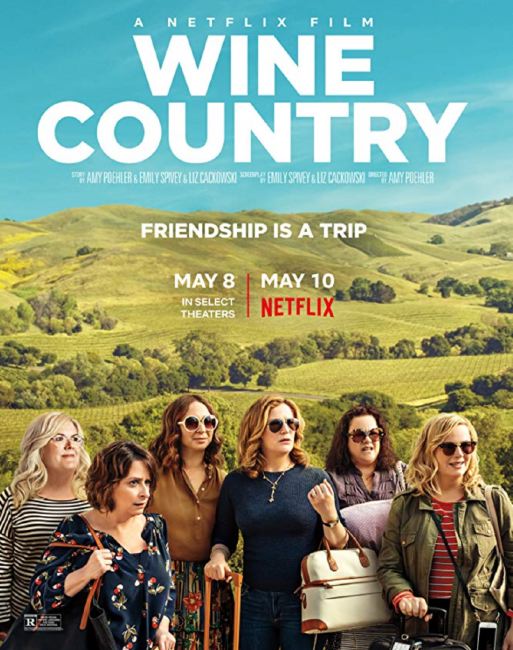 Taste of the Mountains Menlo Park Wine Walk The Santa Cruz Mountains Winegrowers Association and Station 1300 present Taste of the Mountains Wine Walk on Saturday, June 1, in downtown Menlo Park. Enjoy wines from the boutique wineries of the Santa Cruz Mountains poured in various designated tasting locations up and down Santa Cruz Avenue. Purchase your favorites from the bottle booth with 20% of the sales benefiting the Menlo Park Atherton Education Foundation (MPAEF). Participating Pinot Noir focused wineries featured in the PinotFile include Big Basin Vineyards, Lester Estate Wines, Mindego Ridge, and Neely Wine. West of West Tastings The West Sonoma Coast Vintners will be in several cities hosting special wine tastings. May 5, 2019, in Boston, May 8, 2019, in New York City, May 19, 2019, in Atlanta, and May 22, 2019, in Nashville. Participating wineries include Ceritas, DuMOL, Ernest, Flowers, Freeman, Gros Ventre, Littorai, Occidental, Peay, Red Car, Senses, Small Vines, Wayfarer and Whistler. For information and tickets, visit www.citywinery.com. Lynmar Estate Offers a New Season of Wine & Food Pinot & Pizza pairing is held under the shade of towering trees on the Estate. Each artisan pizza is prepared in a brick oven and features estate- grown vegetables and is paired with an array of Lynmar wines. The dates are May 19, June 16, July 14, August 18 and September 15. $85 per person. Wine & Food Lunch Pairing consists of a three-course wine and food pairing directed by Chef David Frakes and enjoyed while overlooking the vineyards and gardens. Offered Thursday through Sunday with a seating at 11:30 am. $95 per person. These events, held at one of Sonoma County’s most beautiful hospitality centers, can be reserved at reserve@lynmarestate.com. The Lynmar Ambassadors program will be bringing Lynmar’s proprietors, winemaker and vineyard manager to select homes and private clubs in 2019. If you are a Lynmar Advocate with five friends interested in joining the club community, you can arrange this unique opportunity. A Lynmar partner will help you host in style and share the Lynmar story. Contact anisya@lynmarestate.com. Lynmar Estate was voted the best tasting room in Sonoma County in the North Bay Bohemian Best of 2019 issue (tasting by reservation only). Wide Disparity in State Wine Taxes:
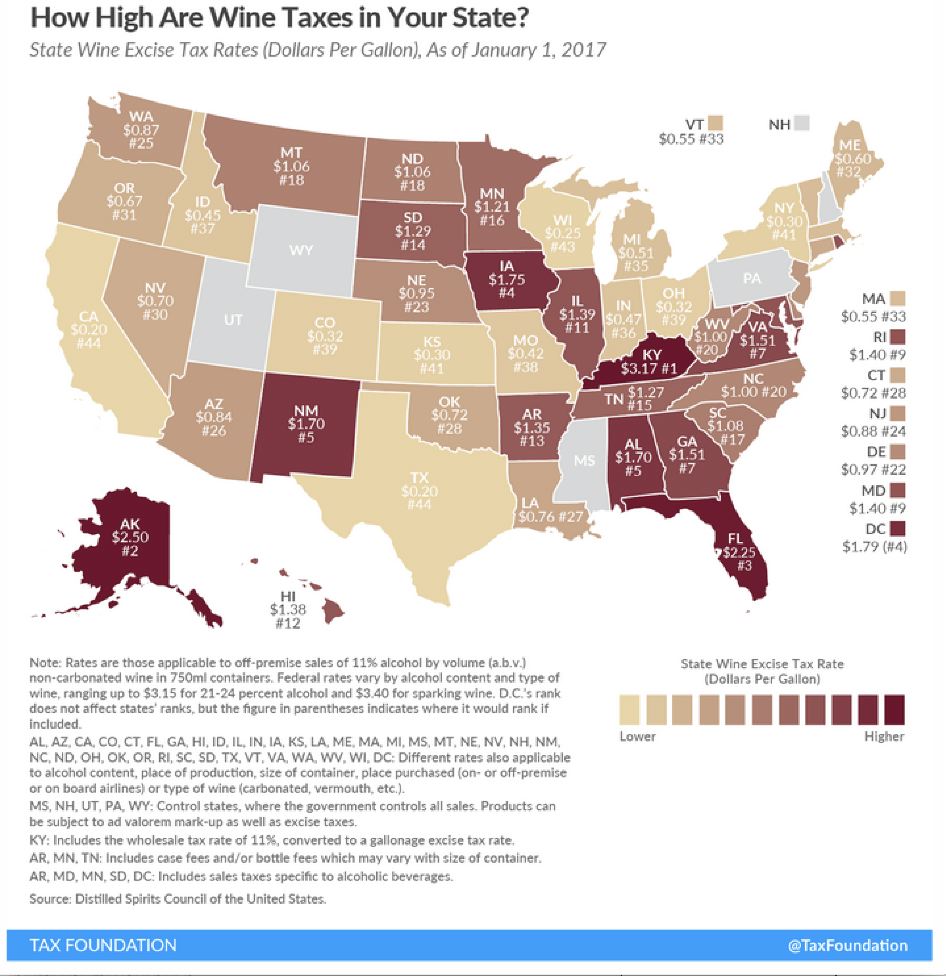
2019 International Pinot Noir Celebration
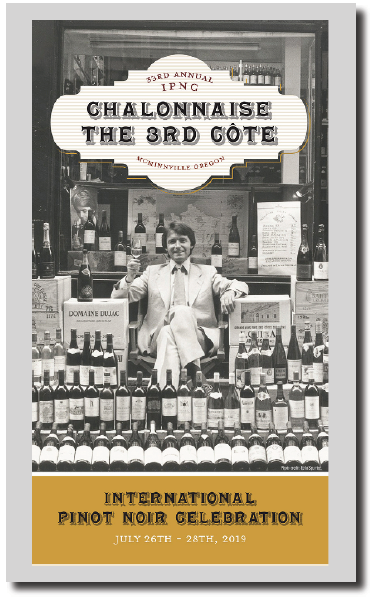 Oregon’s venerated Pinot Noir bacchanal, the granddaddy of Pinot Noir festivals, continues to attract pinotphiles from around the world to the tiny, bucolic campus of Linfield College in McMinnville, Oregon. There is no homework or written tests, and no dreadful lectures at 8:00 a.m. in the morning, just an abundance of Pinot Noir paired with the delicious bounty of Oregon accompanied by plenty of joie de vivre among those who join the celebration. The first International Pinot Noir Celebration (IPNC) was held in 1987 when a group of Oregon vintners gathered to figure out a way to promote Oregon wine. The event has since gained widespread popularity, and now includes winemakers from Oregon, California, Burgundy, Germany, Austria, Italy, New Zealand, Australia, and South America. I personally have attended many years. The 2019 IPNC will be held July 26-28. Full weekend guests arrive Friday morning for three days of tastings, seminars, vineyard tours and gourmet dining. Guests have the opportunity to taste wines from over 70 featured wineries (60 North American wineries) and the opportunity to spend time with the winemakers themselves. More than 60 chefs from the region’s most revered restaurants cook farm-to-table cuisine over the course of the weekend. This year’s Master of Ceremonies and Grand Seminar moderator will be Decanter’s consultant editor Steven Spurrier. He will guide an in-depth discussion of the wines of the Côte Chalonnaise, “The 3rd Côte.” A list of attending wineries, event details, available lodging on campus or nearby, and Pre-IPNC Dinners are on the IPNC website at www.ipnc.org. Tickets are available for the Full Weekend ($1295) as well as a la carte tickets for the Saturday night Salmon Bake ($225) and Sunday’s Passport to Pinot ($150). More information can be obtained by emailing IPNC at info@ipnc.org. Look me up if you attend! |